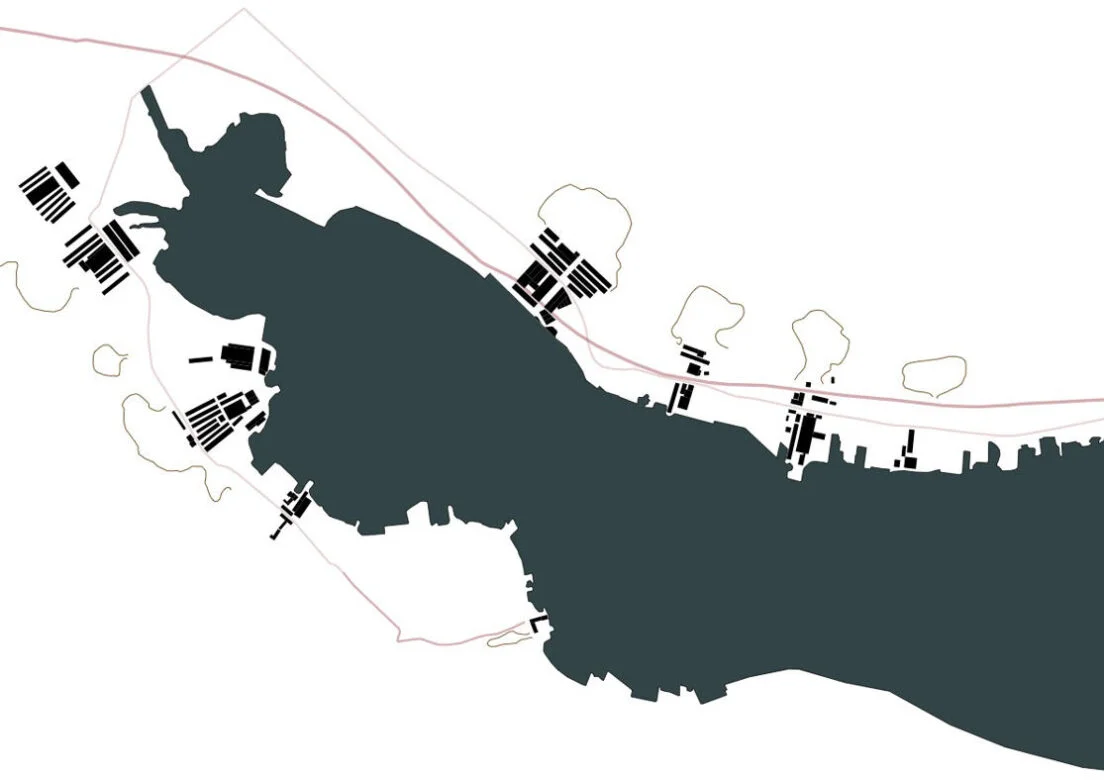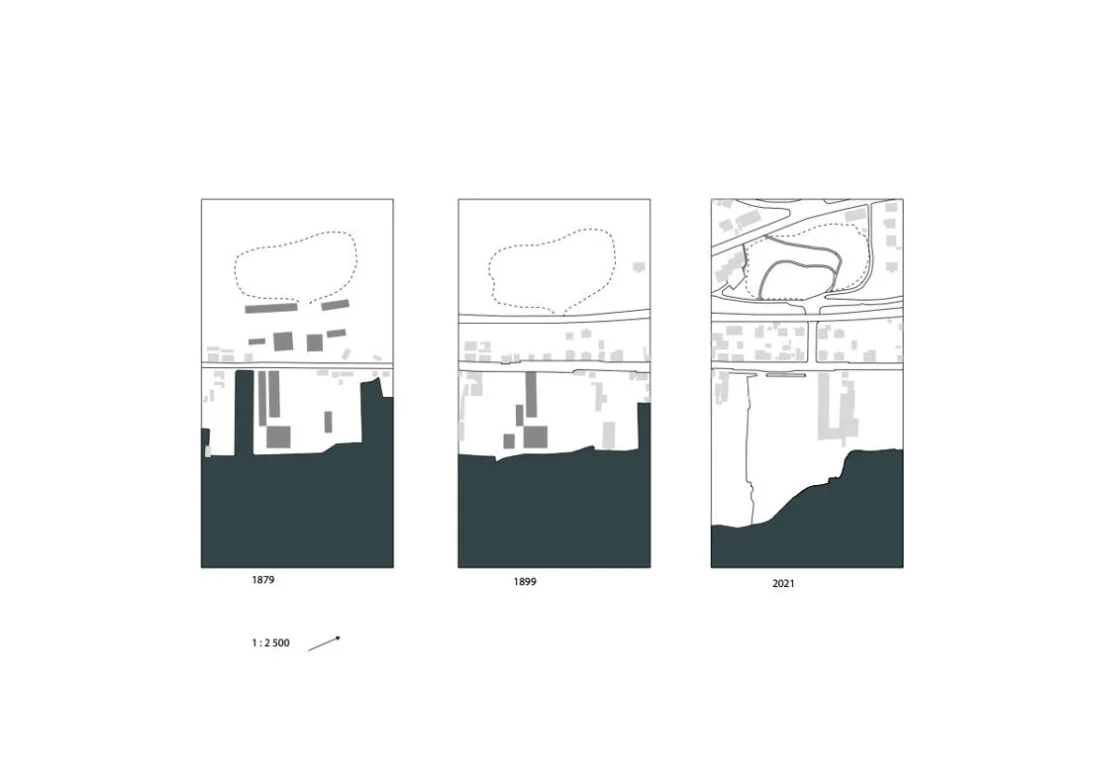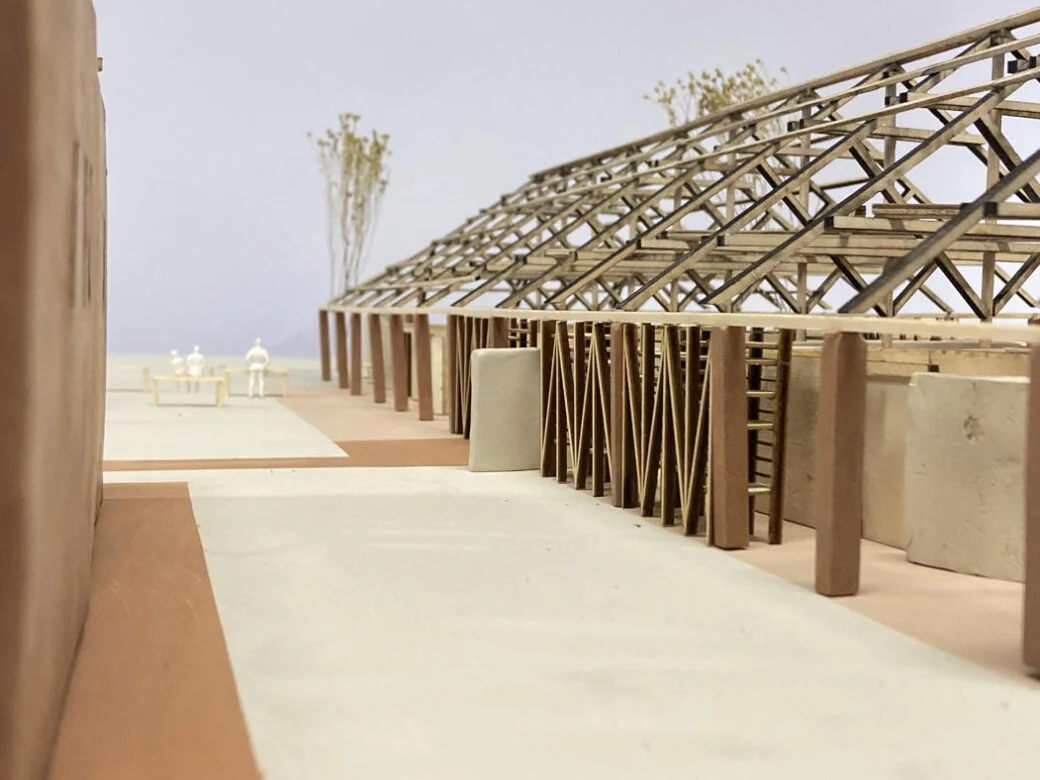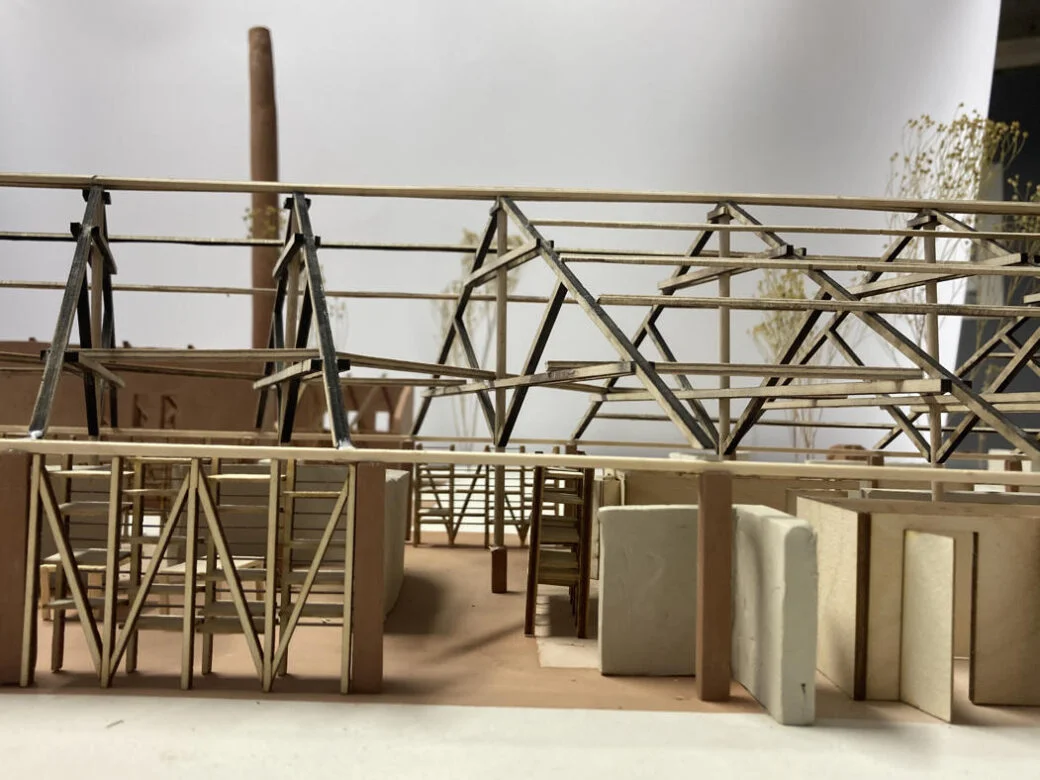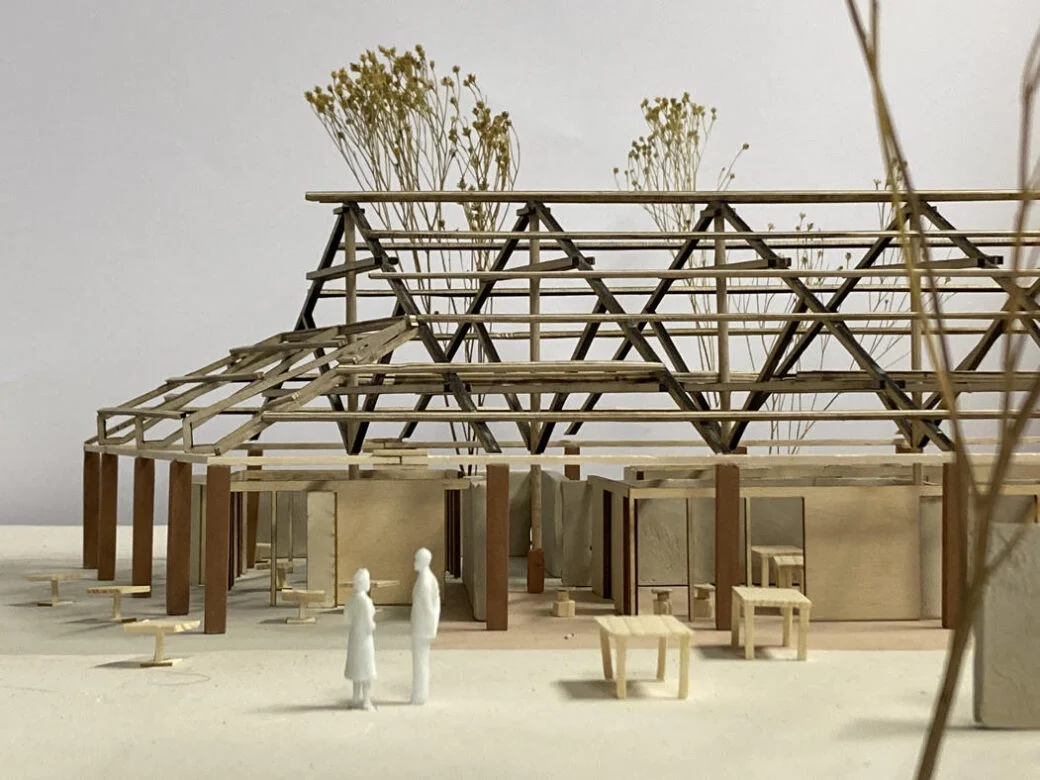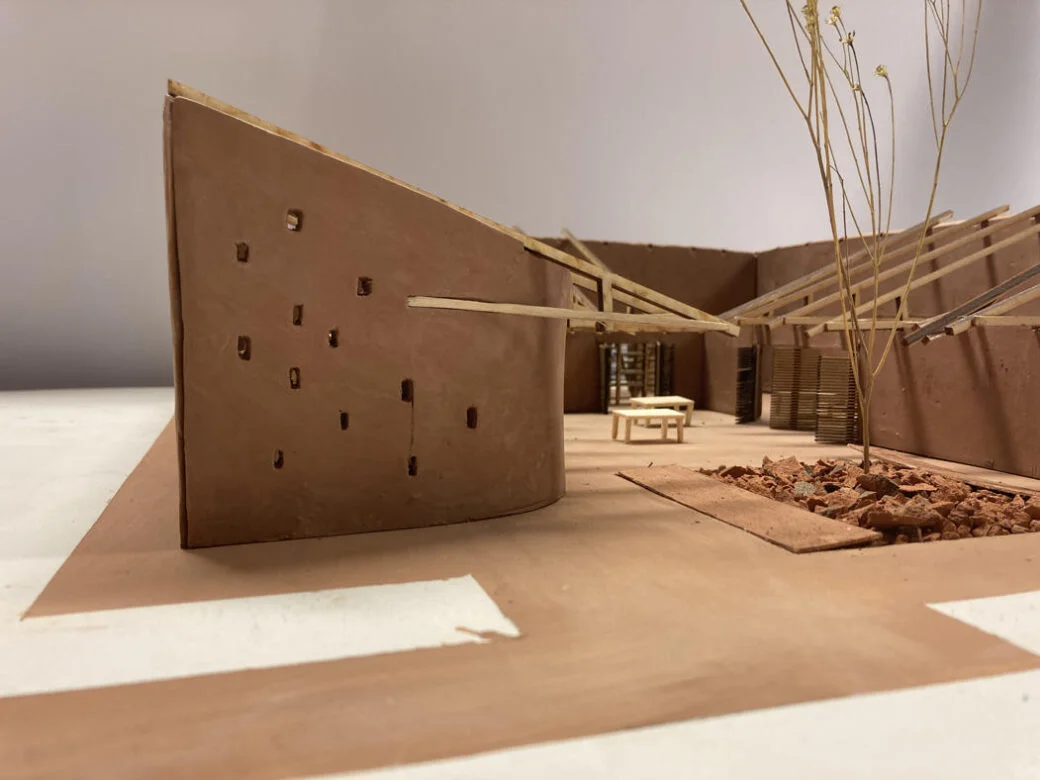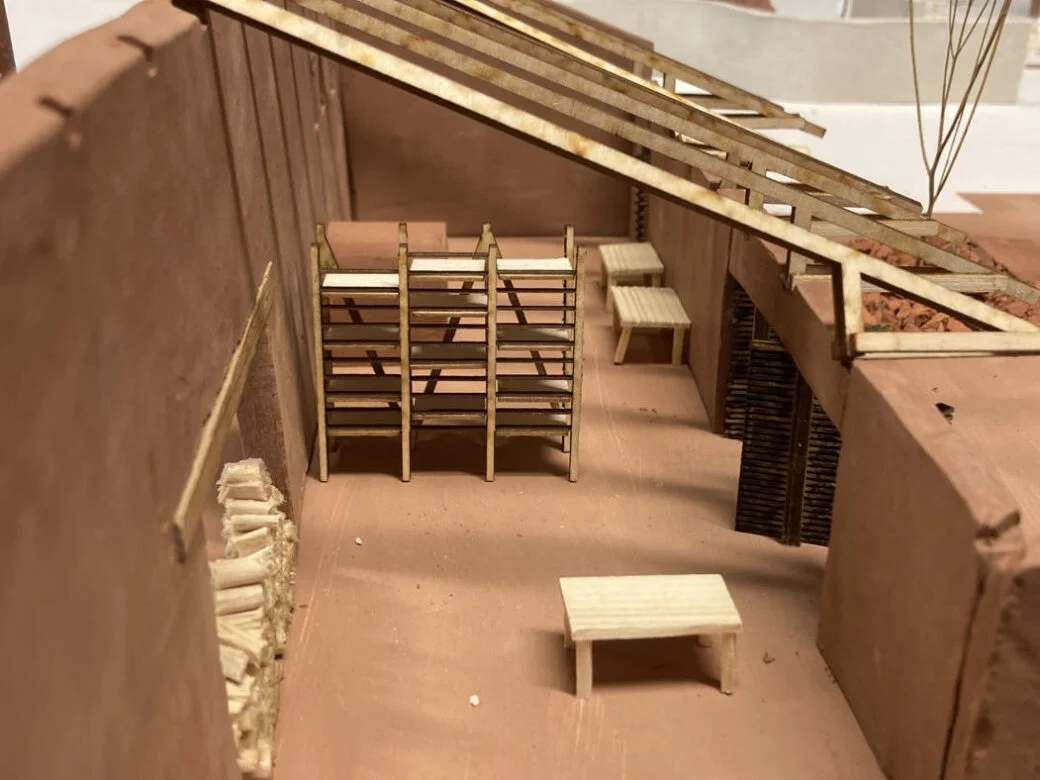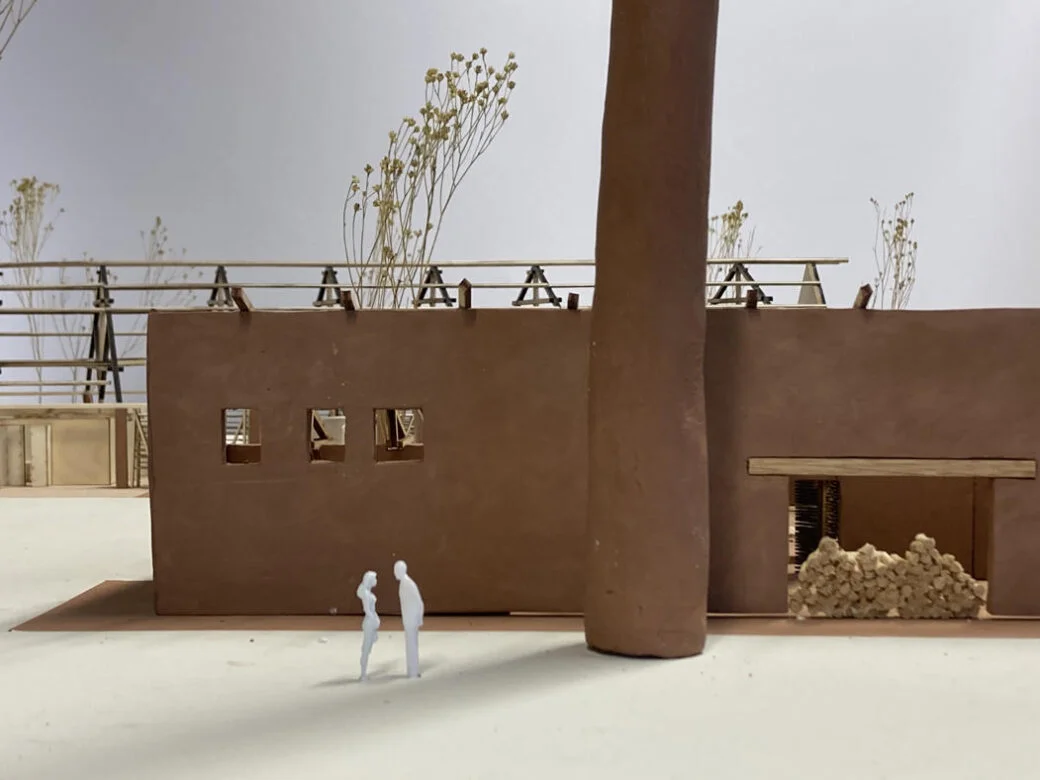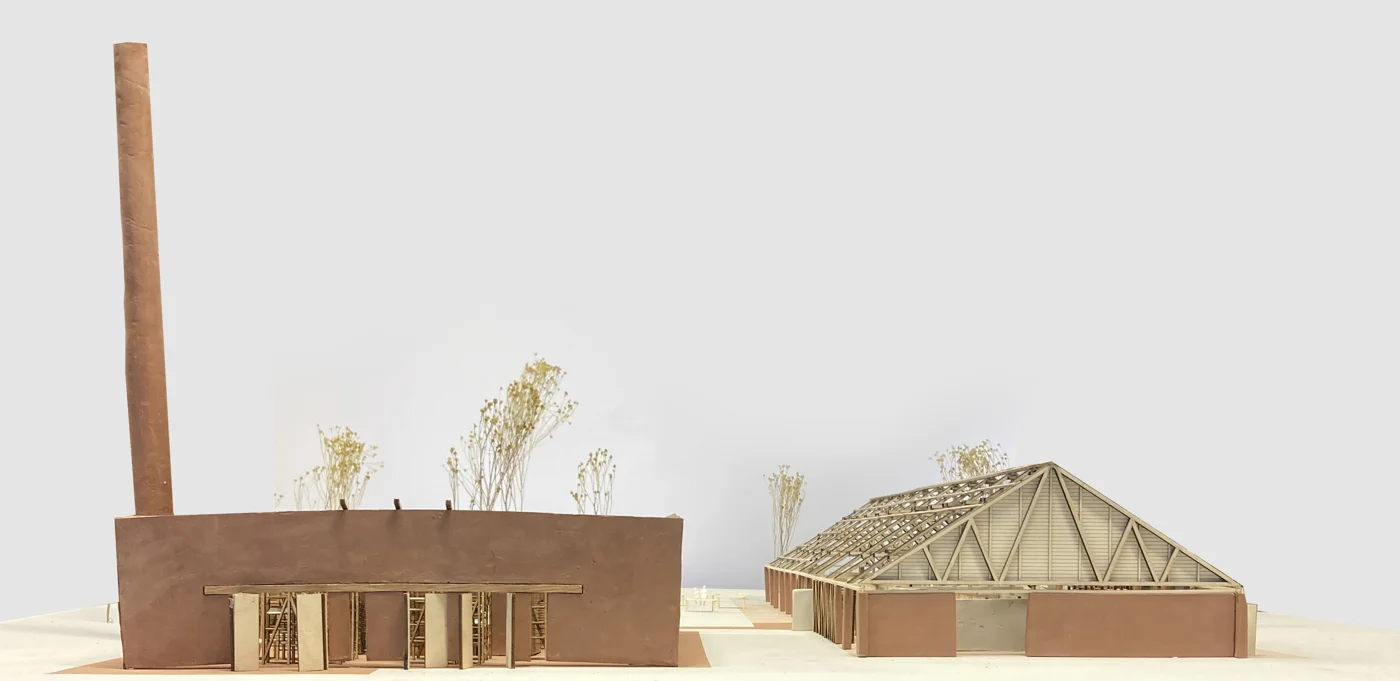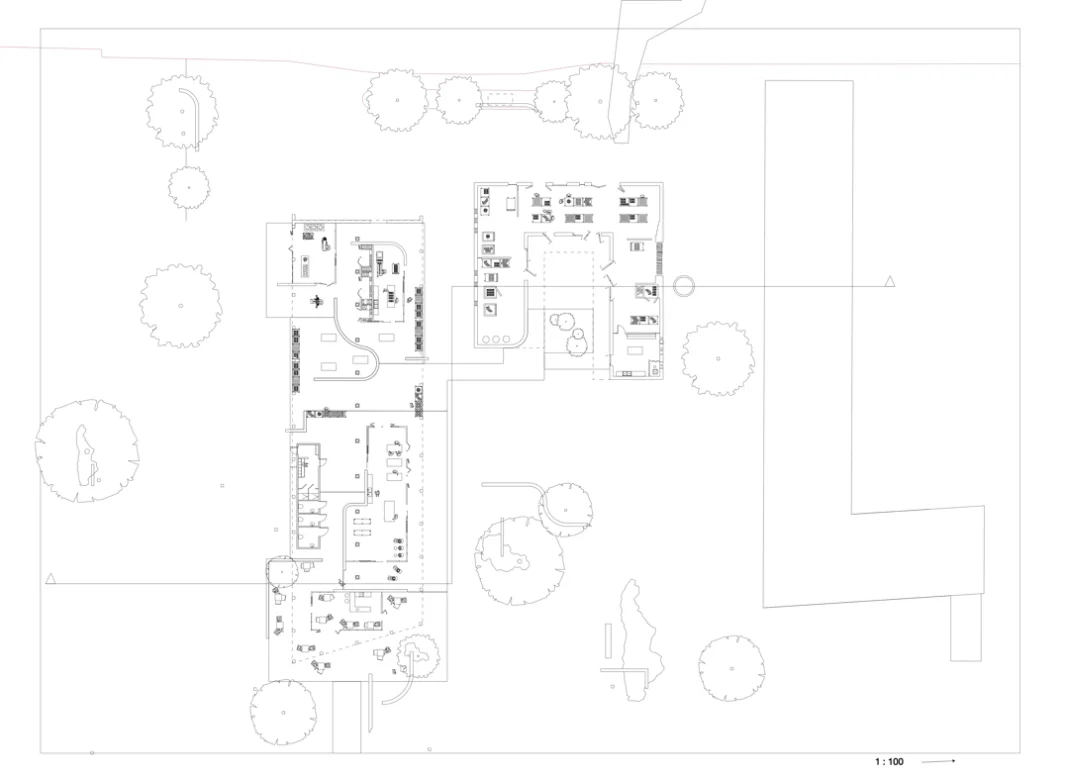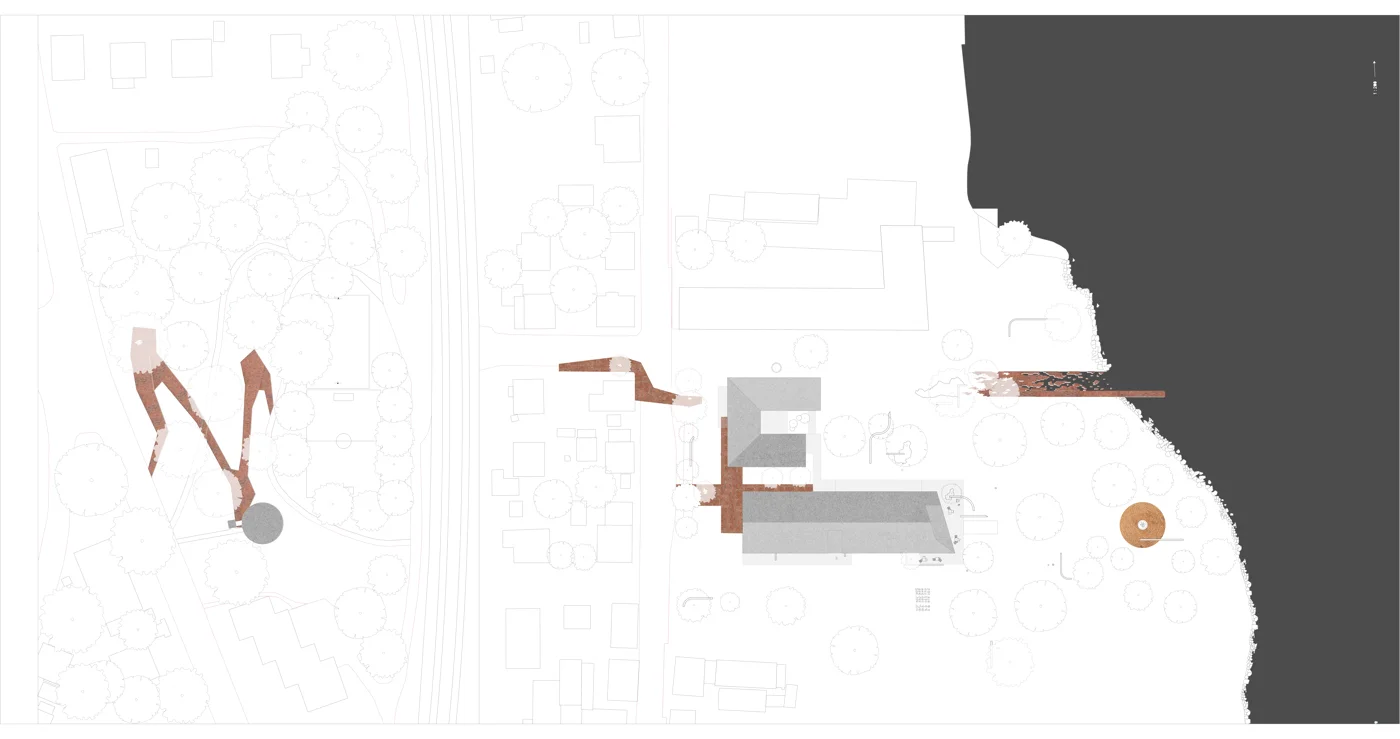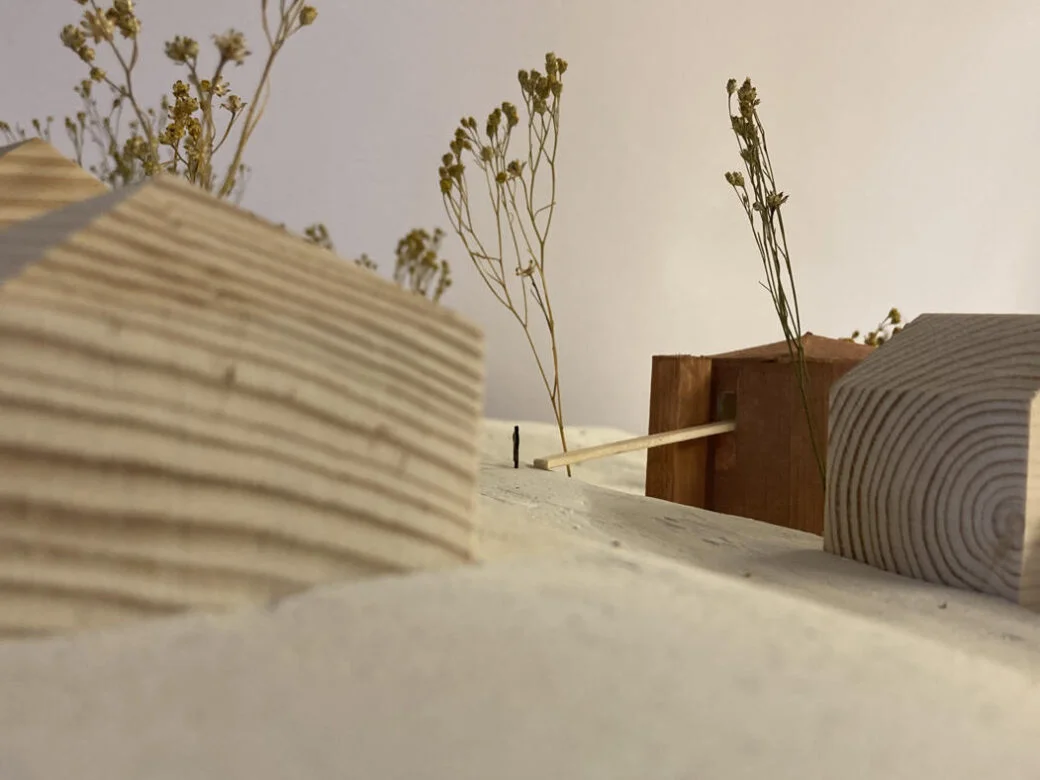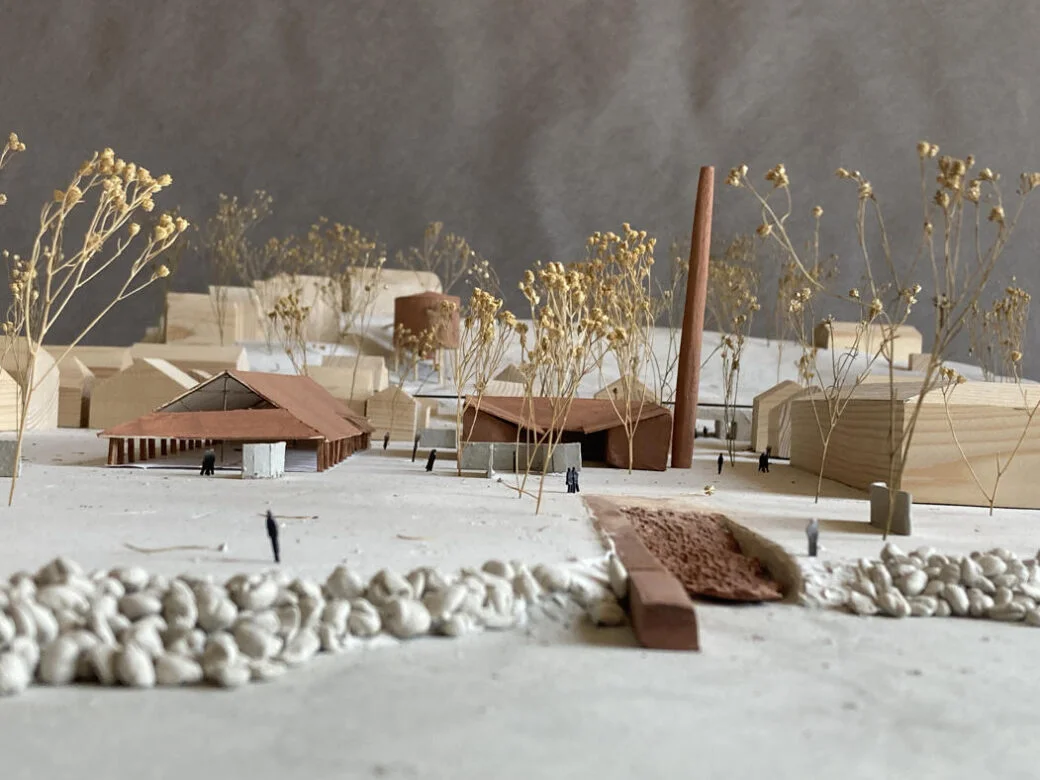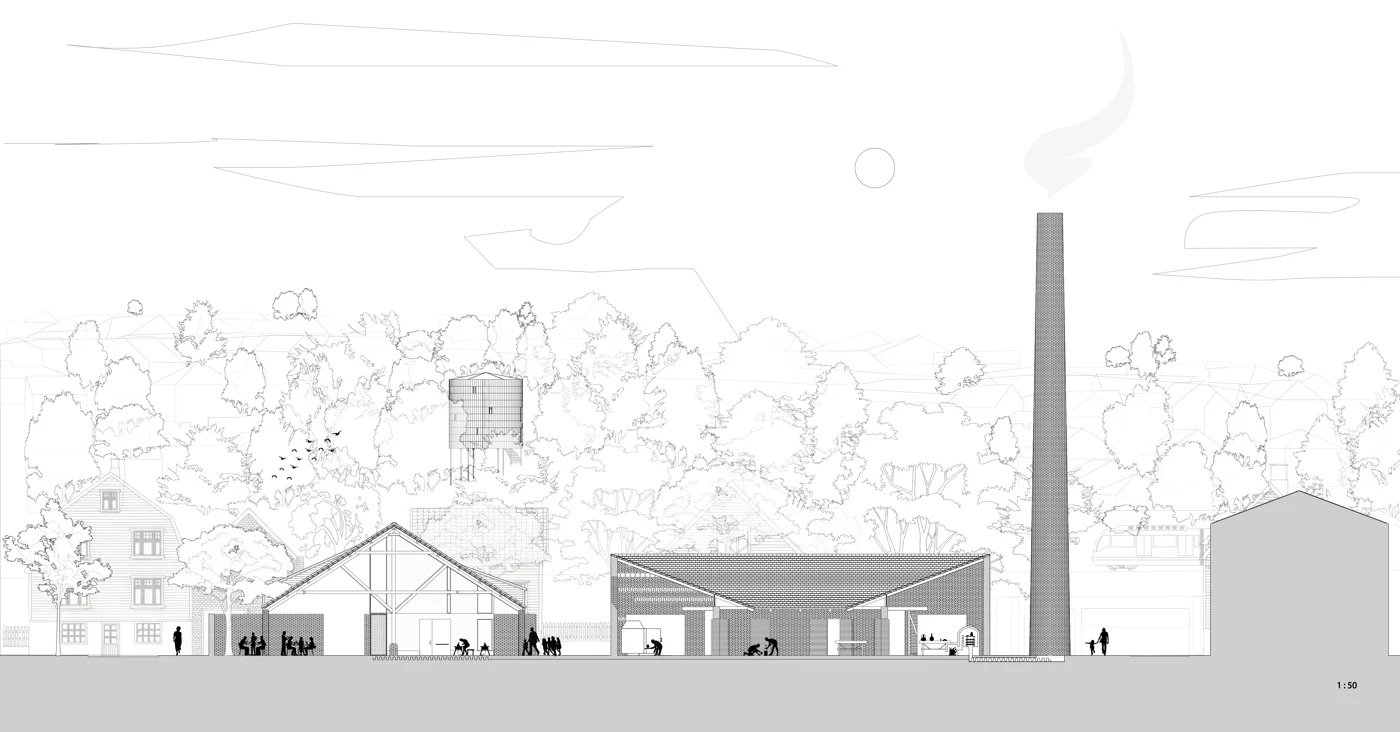
In the back: circular tower; exhibition space
Sandnes is a City at the west coast of Norway close to fjords, mountains, grasslands and beaches. The landscape all clearly testifies to the powerful natural forces that occurred during the Ice age. The heavy ice masses grounded down the mountains, dug the fjords and transported the masses. From the great mountains came the microscopic clay particles that created the landscape of Sandnes. This clay also became the main resource and factor in the creation of Sandnes as a City. The clay was transformed to a big spectrum of brickworks and potteries.
The site, Altona is one of few traces of the once important clay related industries. A bowl shaped formation in the landscape testifies to the excavation of clay. A leveled area in connection to the sea, is where the industry buildings were placed. From here the clay products were shipped on boats, transported by sea.
At this historical site I am suggesting a clay lab, a proposal that aims to restart the “machinery” of working with clay; excavating, processing, forming, drying and burning. It will not be the rebirth of an industrial mass production, but a laboratory where the cultural values and integration in an urban context is in focus. In my project I aim to convey the history of an important past as well as facilitating experimentation and possibilities to explore potential for the future use of clay.
The architecture and facilities will through the site follow the processing of clay. The journey from clay to brickworks, ceramic utensils and ceramic art. It aims to give an insight into the versatile activities connected to the clay related work, to both inform and include the general public in the participation of the clay lab. As a working space, the clay lab seeks to be an interdisciplinary hub where professions connected to clay in different ways can benefit from each other’s knowledge.
The versatile properties of clay have been used for construction, art and utensils for thousands of years. What also is unique with clay is that it may provide some important qualities before becoming a finished product. The plastic properties of clay give a unique possibility for both professionals and amateurs to express oneselves by forming, manipulating and reshaping. It is also a sensible experience where the hands are the main tools, and the “brain-hand-center” is stimulated. The activity of working with clay provides some universal values that can be of interest not only for the professionals but also for the general public that can contribute to a broad involvement and keeping the area active both within and without working hours.
The activity of creating with clay does not only have a benefit for the person doing the work. Furthermore, I believe that this activity also can have a positive influence on the people watching the activity and the social dimension of visible craftsmanship in an urban setting can be a strategy to create a lively public space. The clay lab is also a tool for shaping the site in a way that facilitates a wide range of different activities in the public interest.
How the future clay activities link to some cultural, historical and geological roots of the city is an essential part of the project. But it is also a strategy for a sustainable project. The combination of reuse and new production in different scales is an important element of the clay lab; on the area scale, building scale, on the building component scale and on a thematic scale. How the combination of reuse and new production can benefit from each other and provide both social and environmental sustainability. The goal is a project where the passing of knowledge and cultural crafting traditions represents both a valuable social function and a tool for reuse and environmental sustainability. On the other hand, In addition to the environmental perspective, reuse can also be a source of inspiration, creativity as well as a point back to the rich industrial, historical and geological past of sandnes.

